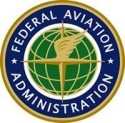Fri, Mar 04, 2011
The 1.6 Million Youth Which Participated In The EAA Program Are
Five Times More Likely To Become Pilots
 New data compiled by the FAA and EAA shows that the EAA Young
Eagles program is making a significant impact in creating aviators.
The results emerged from a joint EAA/FAA project that matched the
names of Young Eagles, now ages 15-34, who have flown since
the program’s inception in July 1992 with the FAA registry.
EAA Chairman Tom Poberezny announced the figures in his Position
Report column published in the March edition of EAA Sport Aviation
magazine.
New data compiled by the FAA and EAA shows that the EAA Young
Eagles program is making a significant impact in creating aviators.
The results emerged from a joint EAA/FAA project that matched the
names of Young Eagles, now ages 15-34, who have flown since
the program’s inception in July 1992 with the FAA registry.
EAA Chairman Tom Poberezny announced the figures in his Position
Report column published in the March edition of EAA Sport Aviation
magazine.
“Since the Young Eagles program began, it has become the
most successful youth aviation education program in history,”
said Poberezny, who flew the first Young Eagles at the 1992 EAA
Fly-In Convention in Oshkosh. “Now with nearly 20 years of
flights by EAA-member pilots, the numbers show that Young Eagles is
making an impact on the pilot population that is unmatched by any
other single program.”
Among the findings is that more than 1.1 million Young
Eagles who are now ages 15 to 34 are 5.4 times more likely to earn
a pilot certificate than those of the same age who have not had a
Young Eagles flight. Already, 7.3 percent of all pilots below age
35 are former Young Eagles, a number that will grow as the group
reaches the age – late 30s to early 50s – when their
participation in aviation accelerates.
 Among the facts found in the preliminary research:
Among the facts found in the preliminary research:
- 7.3 percent of all pilots below age 35 are former Young Eagles
(the oldest Young Eagles from 1992 are now reaching age 35).
- Young Eagles are 5.4 times more likely to earn a pilot
certificate than those who have not flown as a Young Eagle.
- Nine percent of those pilots are female, a 50 percent
difference when compared to females being just 6 percent of the
current U.S. pilot population.
- Two out of every 100 young people who take their first Young
Eagles flight at age 17 earn pilot certificates. The older a Young
Eagle is at the time of a first flight, the more likely that young
person is to become a pilot. Young Eagles ages 13 and up are
especially more likely to pursue a pilot certificate.
- The more flights that a Young Eagle takes, the more likely that
young person will become a pilot.
- The research was conducted by EAA and FAA beginning in
September 2010.
“More young men and women are becoming pilots at an early
age because of Young Eagles, so they will have a longer and greater
impact on aviation,” Poberezny said. “Everyone involved
in this program can be very proud of the results. More importantly,
these results build excitement for what is yet to come to welcome
the next generation of aviators through Young Eagles and other EAA
programs.”
Those programs include the EAA Flight Plan for young people,
encompassing Sporty’s Online Pilot Training Course –
free of charge – that has already been accessed by more than
6,000 Young Eagles in just two years, as well as EAA student
memberships available to all Young Eagles at no cost.
More News
Also: Pratt & Whitney 747SP, Gratia Aero, Robinson/MagniX, Jack Pelton Part5 The Avidyne Vantage 12 is finally certified and will shortly be shipping out so that aging Cirrus a>[...]
Aero Linx: Army Aviation Medicine Association (AAVMA) The Society of US Army Flight Surgeons (SoUSAFS) serves to advance the science and art of Aerospace Medicine and its allied sc>[...]
Witnesses Reported That They Heard A Loss Of Engine Power Analysis: Witnesses reported that the airplane departed from runway 35 after a successful runup. During the initial climb,>[...]
Radio Magnetic Indicator An aircraft navigational instrument coupled with a gyro compass or similar compass that indicates the direction of a selected NAVAID and indicates bearing >[...]
"After exiting, I had a vague recollection of what just happened…and a much clearer view of how quickly hypoxia can sneak up. Sign-ups for PROTE are open each day of AirVent>[...]
 OSH25 Day 5 Redux: Avidyne Vantage 12, Is Fly-Inn An AeroBnB?, B25 Miss Mitchell
OSH25 Day 5 Redux: Avidyne Vantage 12, Is Fly-Inn An AeroBnB?, B25 Miss Mitchell ANN's Daily Aero-Linx (07.29.25)
ANN's Daily Aero-Linx (07.29.25) NTSB Final Report: Curtiss Wright P-40E
NTSB Final Report: Curtiss Wright P-40E ANN's Daily Aero-Term (07.29.25): Radio Magnetic Indicator
ANN's Daily Aero-Term (07.29.25): Radio Magnetic Indicator Aero-News: Quote of the Day (07.29.25)
Aero-News: Quote of the Day (07.29.25)




